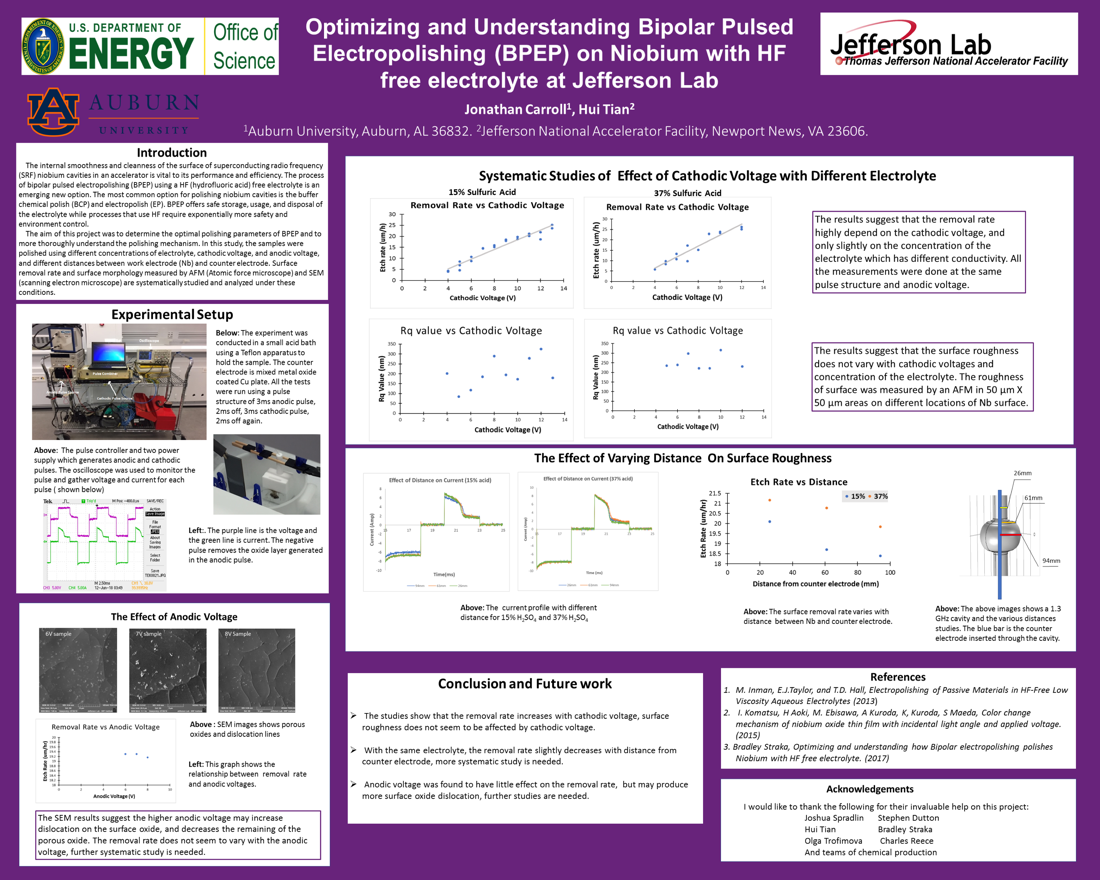Undergraduate Research at Jefferson Lab
Optimizing and Understanding Bipolar Electropolishing on Niobium with HF Free Electrolyte
Student: Jonathan Carroll
School: Auburn University
Mentored By: Hui Tian
The internal smoothness and cleanness of the surface of superconducting radio frequency (SRF) niobium cavities in an accelerator is vital to its performance and efficiency. The process of bipolar pulsed electropolishing (BPEP) using a HF (hydrofluoric acid) free electrolyte is an emerging new option. The most common option for polishing niobium cavities is the buffer chemical polish (BCP) and electropolish (EP). BPEP offers safe storage, usage, and disposal of the electrolyte while processes that use HF require exponentially more safety and environment control. The aim of this project was to determine the optimal polishing parameters of BPEP and to more thoroughly understand the polishing mechanism. In this study, the samples were polished using different concentrations of electrolyte, cathodic voltage, and anodic voltage, and different distances between work electrode (Nb) and counter electrode. Surface removal rate and surface morphology measured by AFM (Atomic force microscope) and SEM (scanning electron microscope) are systematically studied and analyzed under these conditions.

Citation and linking information
For questions about this page, please contact Education Web Administrator.
